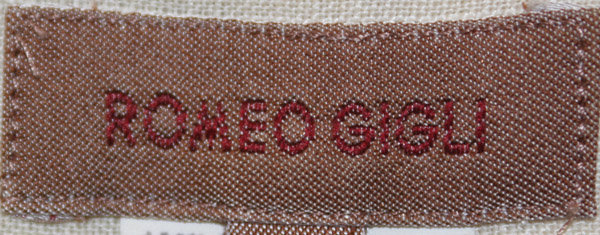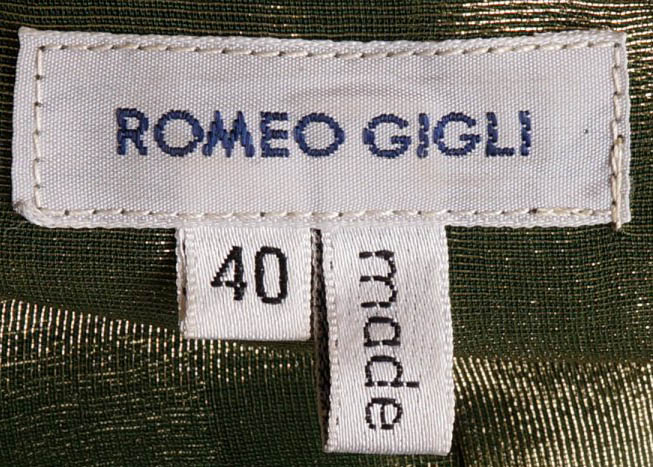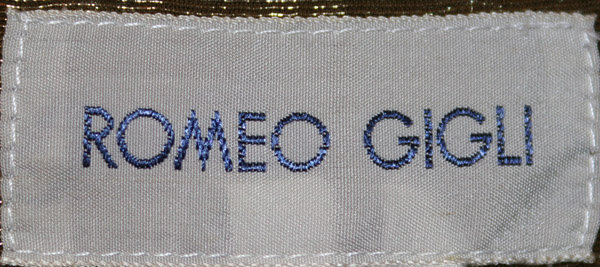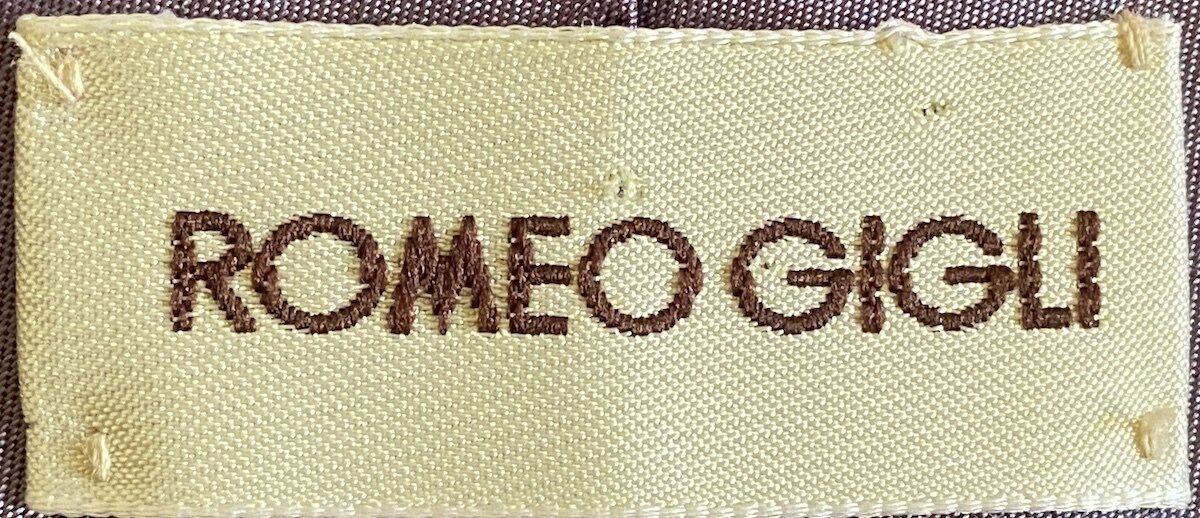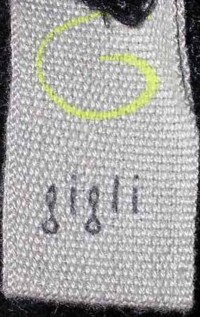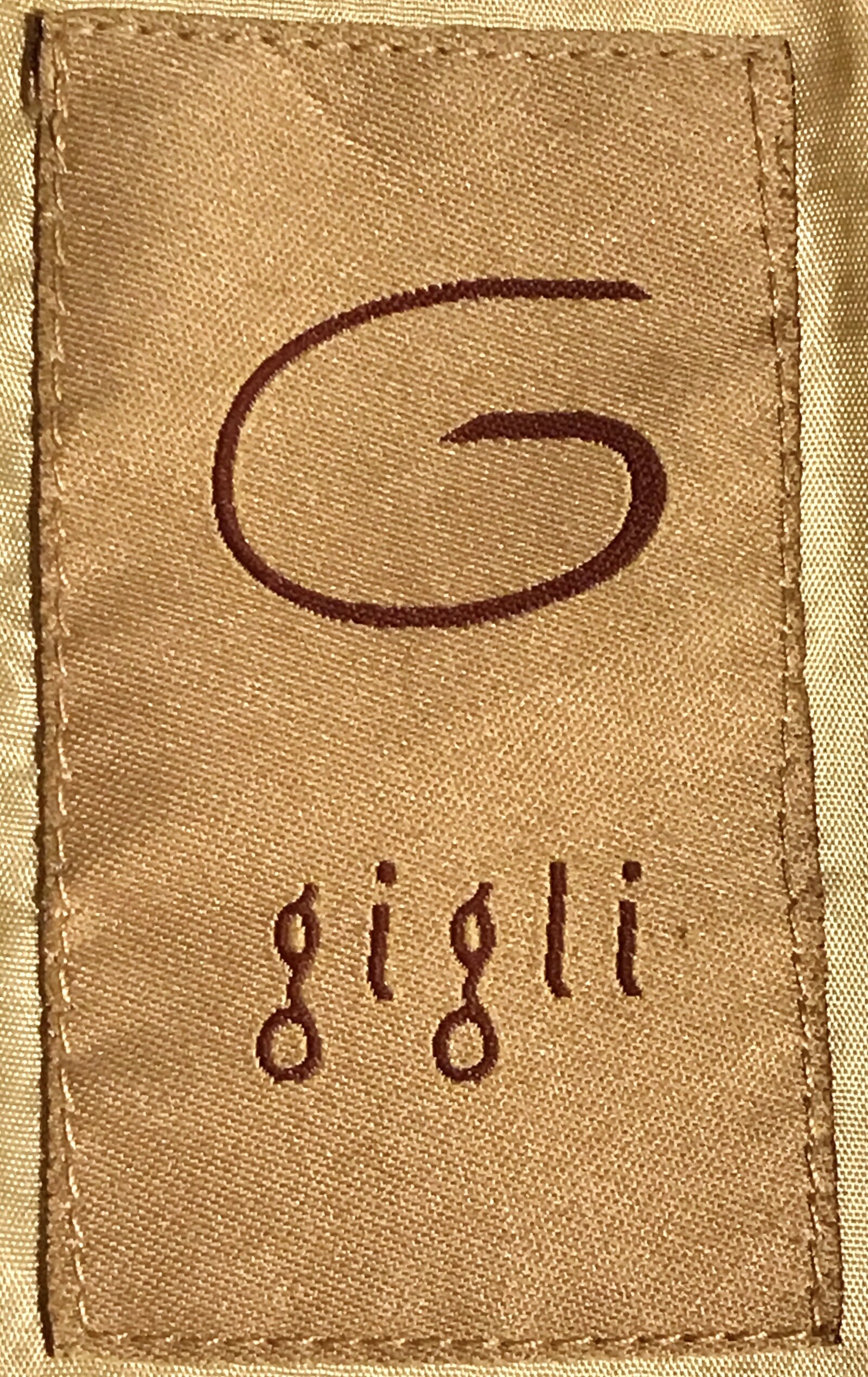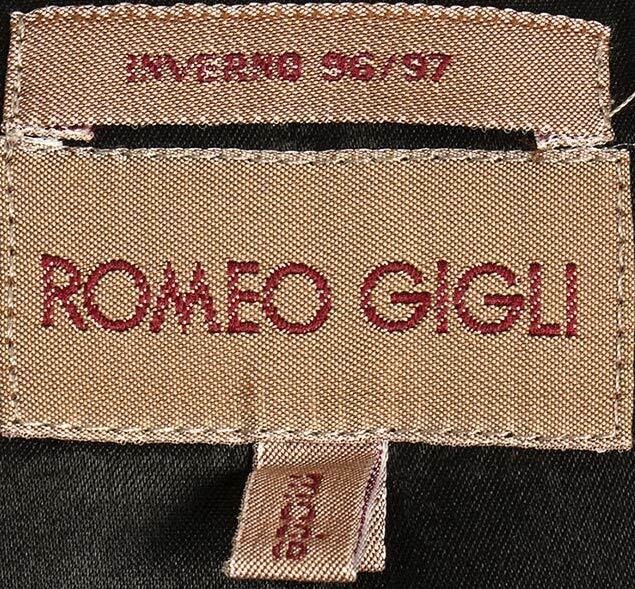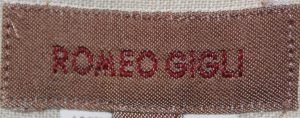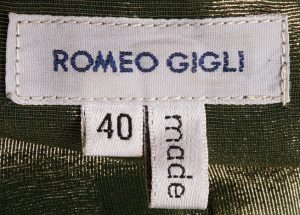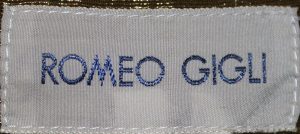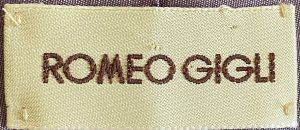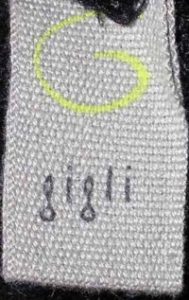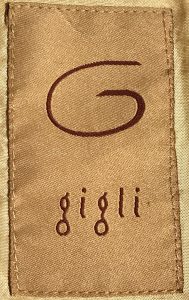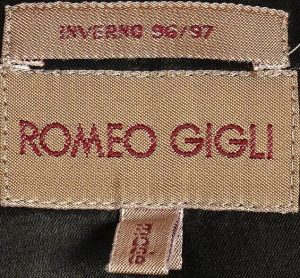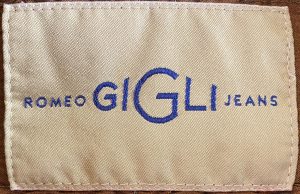Romeo Gigli (b. 1949) started his design career in 1972, working first for a department store and then for Dimitri Couture in New York. The Romeo Gigli label was established in 1981, and through the 1980s he also did a line for Zamasport. He started a younger, lower priced line, G Gigli, in 1990.
Gigli originally studied to be an architect and his fashion designs were greatly influenced by art and his travels. His collections are said to combine Renaissance grandeur, disheveled street punk and Japanese conceptualism.
He is credited with changing the course of fashion by re-introducing a softer, more romantic sensibility at a time when severe power-dressing was the dominant trend. His understated designs featured shawl collars, dropped shoulders, narrow fitted trousers and beautifully draped tulip-shaped skirts.
A dispute with his business partners in 1991 dragged on for more than a decade and caused Gigli to lose control of parts of his brand. He continued to collaborate with other designers and retail brands, including Barneys New York, Callaghan, Donghia and Louis Vuitton, while also teaching fashion in Milan.
In 2012, after a 20-year hiatus, Gigli debuted a collection called Joyce by Romeo Gigli for the Hong Kong luxury retailer.
Written by Vintage Fashion Guild
